Crack Sensitivity Control of Nickel-Based Laser Coating Based on Genetic Algorithm and Neural Network
Abstract
:1. Introduction
2. Laser Cladding Test and Analysis
2.1. Test Equipment and Materials
2.2. Experimental Method
2.3. Analysis of Orthogonal Experiment Results
- In the range of the powder feed rate from 15 to 21 g/min, the crack density of the cladding layer increased gradually with the increase in the powder feed rate. The crack density of the cladding layer was the smallest when the powder feed rate was 15 g/min. The main reason for this is that the laser power was constant and the total output energy of the laser equipment was definite. Additionally, the specific energy decreased as the powder feed rate increased, and the temperature gradient became larger, resulting in an increase in crack density. In addition, with the increase of powder feeding, the specific energy was insufficient; some powders were not fully melted, and the hardness and brittleness of the cladding layer increased, which is also an important factor that led to the increase in crack sensitivity.
- In the range of the lapping rate from 45% to 60%, the crack density of the cladding layer increased continually with the increase of the overlap rate. When the overlap rate range was the minimum of 45%, the crack density of the cladding layer was the smallest. The reason for this is that with the increase of the overlap rate, the cladding layer became increasingly thicker; when the overlap became too high, it resulted in the excessive overlap phenomenon. As the cladding layer became thicker and inclined at a certain angle, the temperature gradient of the cladding layer increased, as did the internal stress, resulting in the increase in the number of cracks.
- In the scanning speed range of 5 to 11 mm/s, the crack density of the cladding layer increased with the increase of scanning speed. The crack density was the lowest when the scanning speed was 5 mm/s. The reason for this is that the energy of the input substrate and cladding layer decreased with the increase in scanning speed [22]. The molten pool gradually became shallower, and the thickness of the cladding layer became thinner. The molten pool and the powder were not sufficiently melted, so the crack sensitivity was increased.
3. Prediction and Control of Cracks in Nickel-Based Laser Cladding Layer Based on Neural Network and Heritage Algorithms
3.1. Establishment of Network Topology Model for Crack Prediction
3.2. Training of Crack Prediction Network Model
3.3. Optimization of the Neural Network by the Genetic Algorithm
3.4. Genetic Algorithm-Optimized Neural Network Model Verification
3.5. Genetic Algorithms for Optimizing the Prediction Results of the Neural Network Model
4. Conclusions
- It was determined via orthogonal experimentation that the order of influence of the parameters on the crack sensitivity of the laser cladding, high-hardness, nickel-based alloy coating was as follows: overlap rate > powder feed rate > scanning speed.
- A genetic algorithm-optimized neural network model between the powder feeding rate, lapping rate, scanning speed, and crack density of the laser cladding, nickel-based cladding layer was established. The simulation results demonstrated that the neural network optimized by the genetic algorithm was more accurate than the neural network model without genetic algorithm optimization.
- The crack density of the high-hardness, nickel-based laser cladding layer could be effectively predicted by the process parameters. The prediction error of the genetic algorithm-optimized neural network model was within 9.8%, which proves the reliability of the model. The genetic algorithm optimized the prediction result of the neural network to obtain the process parameters for minimum crack density: a powder feed rate of 15.0726 g/min, an overlap rate of 49.7997%, and a scanning speed of 5.9275 mm/s. The minimum crack density was 0.001272 mm/mm2. The predicted and optimized crack densities were smaller than the minimum crack density obtained by the orthogonal test, and the optimization effect was better. Applying this prediction optimization method to the crack control of laser cladding forming has high practical value.
Author Contributions
Funding
Acknowledgments
Conflicts of Interest
References
- Liu, H.; Qin, X.; Huang, S.; Jin, L.; Wang, Y.; Lei, K. Geometry characteristics prediction of single track cladding deposited by high power diode laser based on genetic algorithm and neural network. Int. J. Prec. Eng. Manuf. 2018, 19, 1061–1070. [Google Scholar] [CrossRef]
- Rahman Rashid, R.A.; Palanisamy, S.; Attar, H.; Bermingham, M.; Dargusch, M.S. Metallurgical features of direct laser-deposited Ti6Al4V with trace boron. J. Manuf. Process. 2018, 35, 651–656. [Google Scholar] [CrossRef]
- Nazari, K.A.; Rahman Rashid, R.A.; Palanisamy, S.; Xia, K.; Dargusch, M.S. A novel Ti-Fe composite coating deposited using laser cladding of low cost recycled nano-crystalline titanium powder. Mater. Lett. 2018, 229, 301–304. [Google Scholar] [CrossRef]
- Quazi, M.M.; Fazal1, M.A.; Haseeb, A.S.M.A.; Farazila, Y.; Masjuki, H.H.; Arslan, A. Effect of rare earth elements and their oxides on tribo-mechanical performance of laser claddings: A review. J. Rare Earths 2016, 34, 549–564. [Google Scholar] [CrossRef]
- Xu, Z.; Jiao, J.; Zhang, Z.; Yang, Y.; Zhang, W. Study on laser repair technology of Nickel-based superalloy. Mater. Rev. 2019, 33, 3196–3202. [Google Scholar]
- Ge, M.; Xiang, J.; Fan, Z. Effect of laser cladding repair on fatigue crack growth rate of TC4 titanium alloy. Mater. Rev. 2018, 32, 2803–2808. [Google Scholar]
- Zhou, C.; Lin, C.; Zhang, J.; Wang, Q.; Du, S. The effect of Nickel-based solder on defects of laser cladding Ni-based WC alloy coating on #45 steel. Surf. Technol. 2018, 47, 91–95. [Google Scholar]
- Dai, Q.; Luo, C.; You, F. Crack restraining methods and their effects on the microstructures and properties of laser cladded WC/Fe coatings. Materials 2018, 11, 2541. [Google Scholar] [CrossRef]
- Rahman Rashid, R.A.; Nazari, K.A.; Barr, C.; Palanisamy, S.; Orchowski, N. Effect of laser reheat post-treatment on the microstructural characteristics of laser-cladded ultra-high strength steel. Surf. Coat. Technol. 2019, 372, 93–102. [Google Scholar] [CrossRef]
- Li, X.; Liu, S.; Wang, J.; Yu, M.; Tang, H. Effect of Different ZrN Addition on microstructureand wear properties of titanium based coatings by laser cladding technique. Coatings 2019, 9, 261. [Google Scholar] [CrossRef]
- Wang, D.; Yang, Y.; Tian, Z.; Shen, L.; Huang, Y. Process optimization of laser multi-layer cladding thick nano-ceramic coating based on neural network and genetic algorithm. Chin. J. Lasers 2013, 40, 62–70. [Google Scholar]
- Ni, L.; Liu, J.; Wu, Y.; Yan, C. Laser cladding process optimization based on neural network and particle swarm optimization. Chin. J. Lasers 2011, 38, 99–104. [Google Scholar]
- Yang, D.; Ma, L.; Huang, W. Surface quality prediction of laser solid forming parts based on artificial neural network. Chin. J. Lasers 2011, 38, 88–93. [Google Scholar]
- Lei, K.; Qin, X.; Liu, H.; Ran, Y. Prediction of characteristic parameters of broadband laser cladding pool based on neural network. J. Optoelectr. Laser 2018, 29, 1212–1220. [Google Scholar]
- Wang, X.; Lin, X.; Yang, H.; Li, Q.; Tan, H.; Han, J.; Huang, W. Research on the crack predictions in K465 superalloy by laser remelting based on BP neural networks. Appl. Laser 2014, 34, 9–14. [Google Scholar] [CrossRef]
- Liu, Y.; Sun, R.; Niu, W.; Zhang, T.; Lei, Y. Effects of CeO2 on microstructure and properties of TiC/Ti2 Ni reinforced Ti-based laser cladding composite coatings. Opt. Lasers Eng. 2019, 120, 84–94. [Google Scholar]
- Wang, Y.L.; Li, C.; Jiang, F.L.; Zhang, J.; An, X.L. Microstructure and mechanical properties of ultrasonic assisted laser cladding Al2O3-ZrO2 ceramic coating. Mater. Res. Express 2019, 6, 106563. [Google Scholar] [CrossRef]
- Yu, J.; Yan, M.; Liang, E.; Yuan, B. Effect of TiO2 on the microstructure and properties of laser cladding layers of Fe-based alloy. Appl. Laser 2003, 4, 201–204. [Google Scholar]
- Fan, Z.; Dong, X.; Wang, K.; Duan, W.; Wang, R.; Mei, X. Effect of drilling allowance on TBC delamination, spatter and re-meltedcracks characteristics in laser drilling of TBC coated superalloys. Int. J. Mach. Tools Manuf. 2016, 106, 1–10. [Google Scholar] [CrossRef]
- Fan, Z.; Wang, K.; Dong, X.; Wang, R.; Duan, W. The role of the surface morphology and segmented cracks on thedamage forms of laser re-melted thermal barrier coatings in presence of a molten salt (Na2SO4+ V2O5). Corros. Sci. 2017, 115, 56–67. [Google Scholar] [CrossRef]
- Zhang, L.; Chen, X.; Liu, W.; Jiang, Z.; Zhao, P.; Liu, D. Study on crack formation mechanism and sensitivity of laser cladding Ni-based alloys. Laser Optoelectr. Prog. 2019, 56, l176–l183. [Google Scholar]
- Li, R.; Jin, Y.; Li, Z.; Zhu, Y.; Wu, M. Effect of the remelting scanning speed on the amorphous forming abilityof Ni-based alloy using laser cladding plus a laser remelting process. Surf. Coat. Technol. 2014, 259, 725–731. [Google Scholar] [CrossRef]
- Wang, D.; Hu, Q.; Zheng, Y.; Xie, Y.; Zeng, X. Study on deposition rate and laser energy efficiency of laser-inductionhybrid cladding. Opt. Laser Technol. 2016, 77, 16–22. [Google Scholar] [CrossRef]
- Abioye, T.E.; Mccartney, D.G.; Clare, A.T. Laser cladding of inconel 625 wire for corrosion protection. J. Mater. Proc. 2015, 217, 232–240. [Google Scholar] [CrossRef]
- Akbari, M.; Saedodin, S.; Panjehpour, A.; Hassani, M.; Afrand, M.; Torkamany, M.J. Numerical simulation and designing artificial neural network for estimating melt pool geometry and temperature distribution in laser welding of Ti6Al4V alloy. Optik-Int. J. Light Electr. Opt. 2016, 127, 11161–11172. [Google Scholar] [CrossRef]
- Liu, G.; Huang, B. Prediction of morphology of Nickel-based alloy cladding coating based on GA-BP neural network. Appl. Laser 2018, 38, 527–535. [Google Scholar]


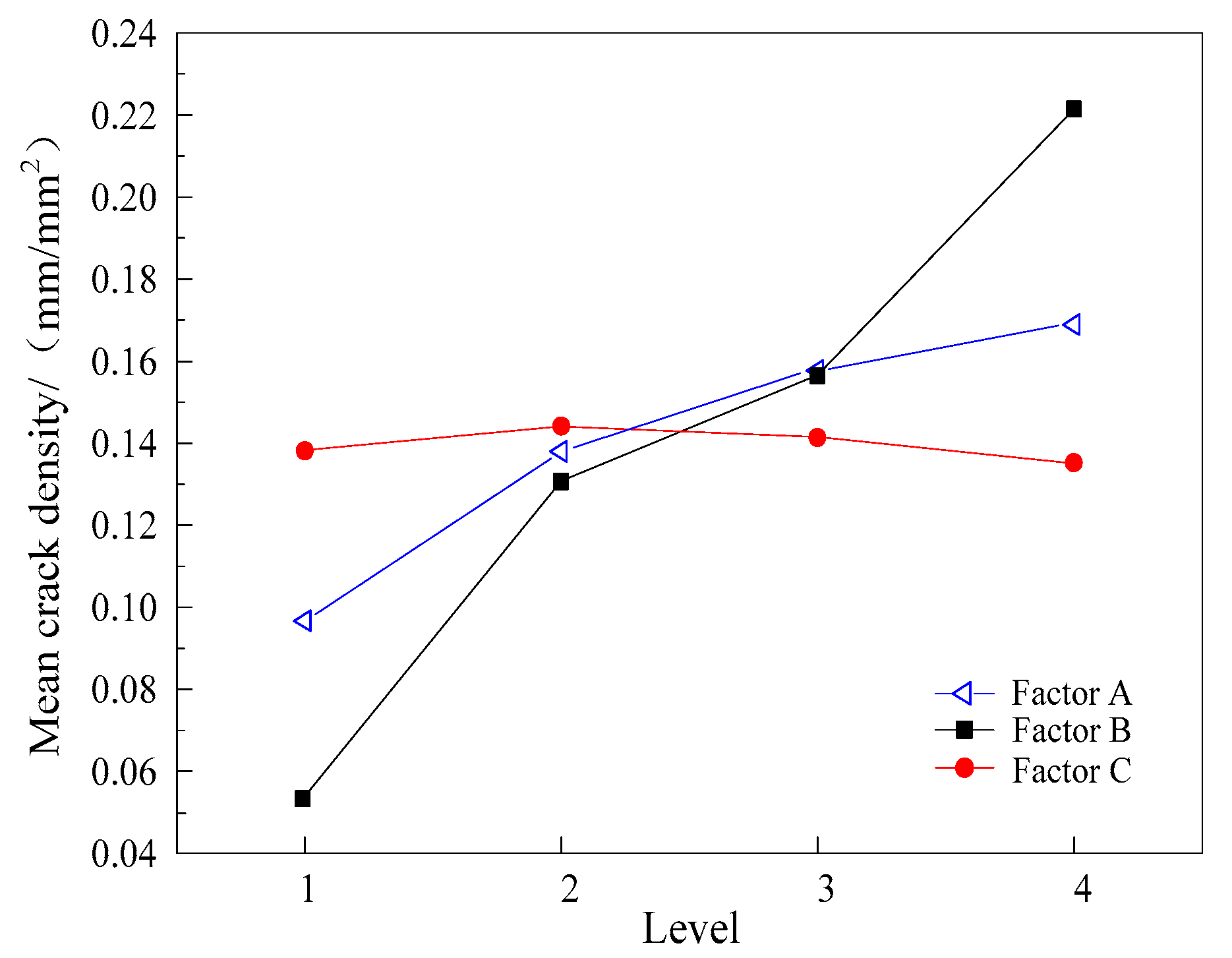
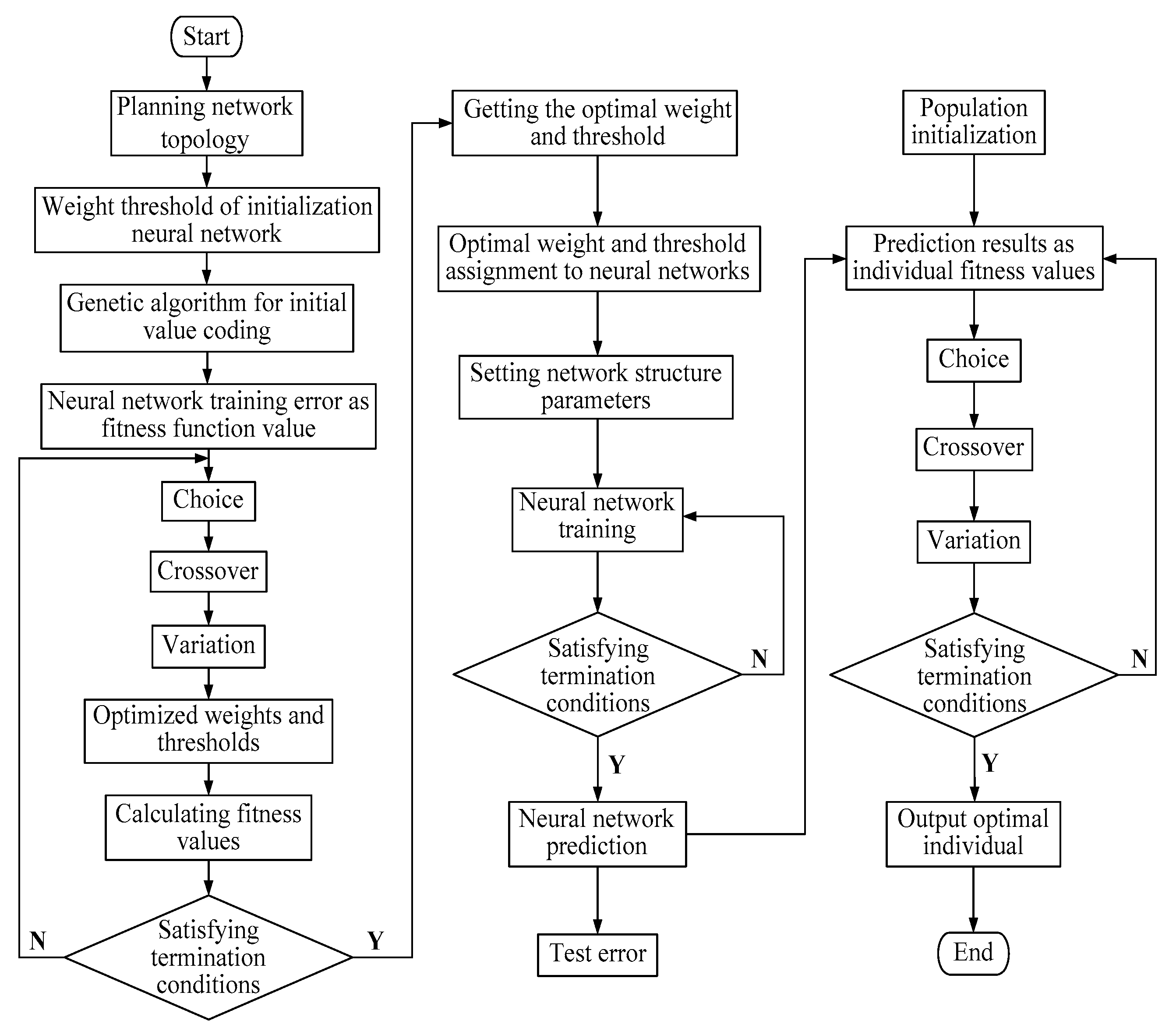
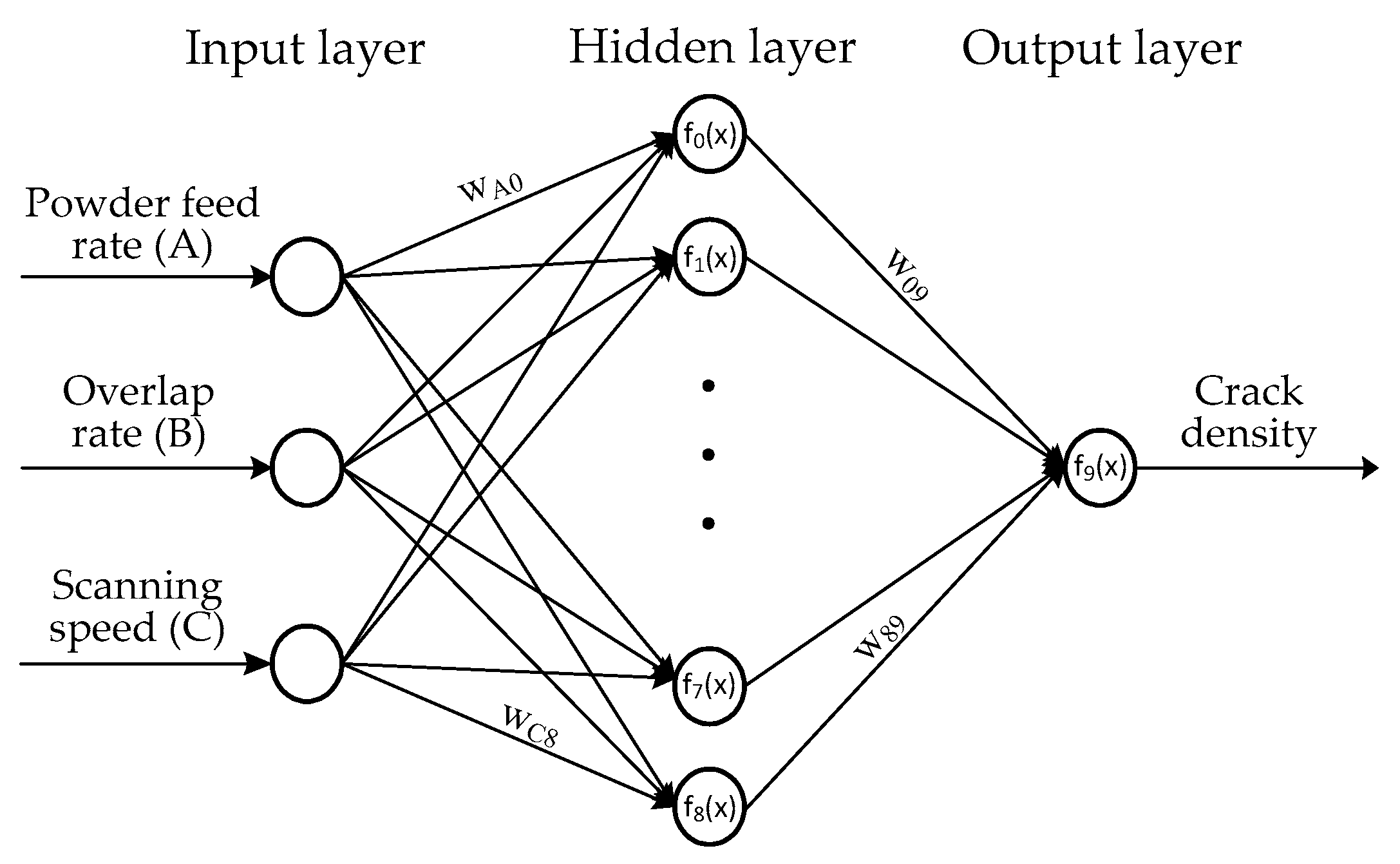

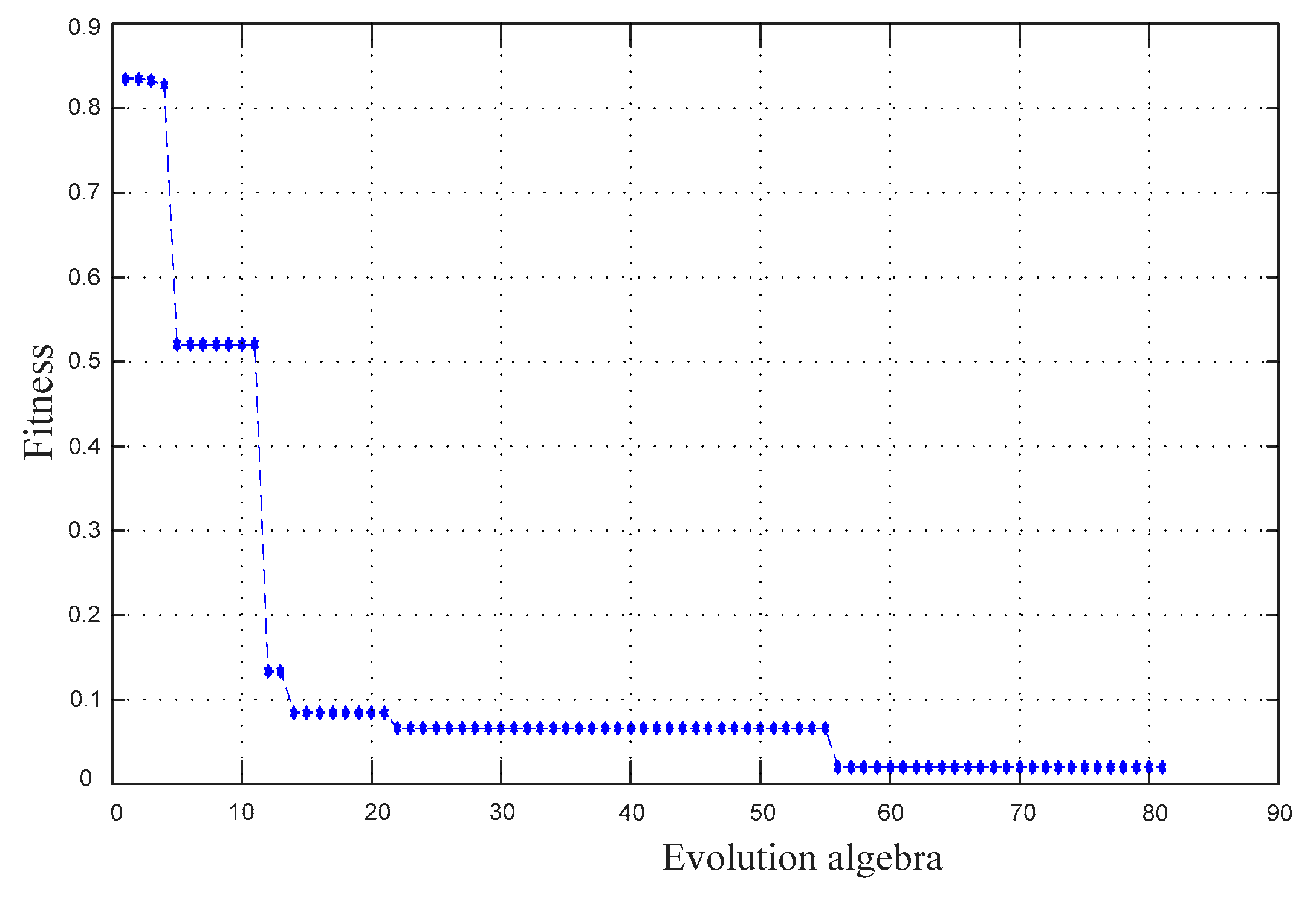

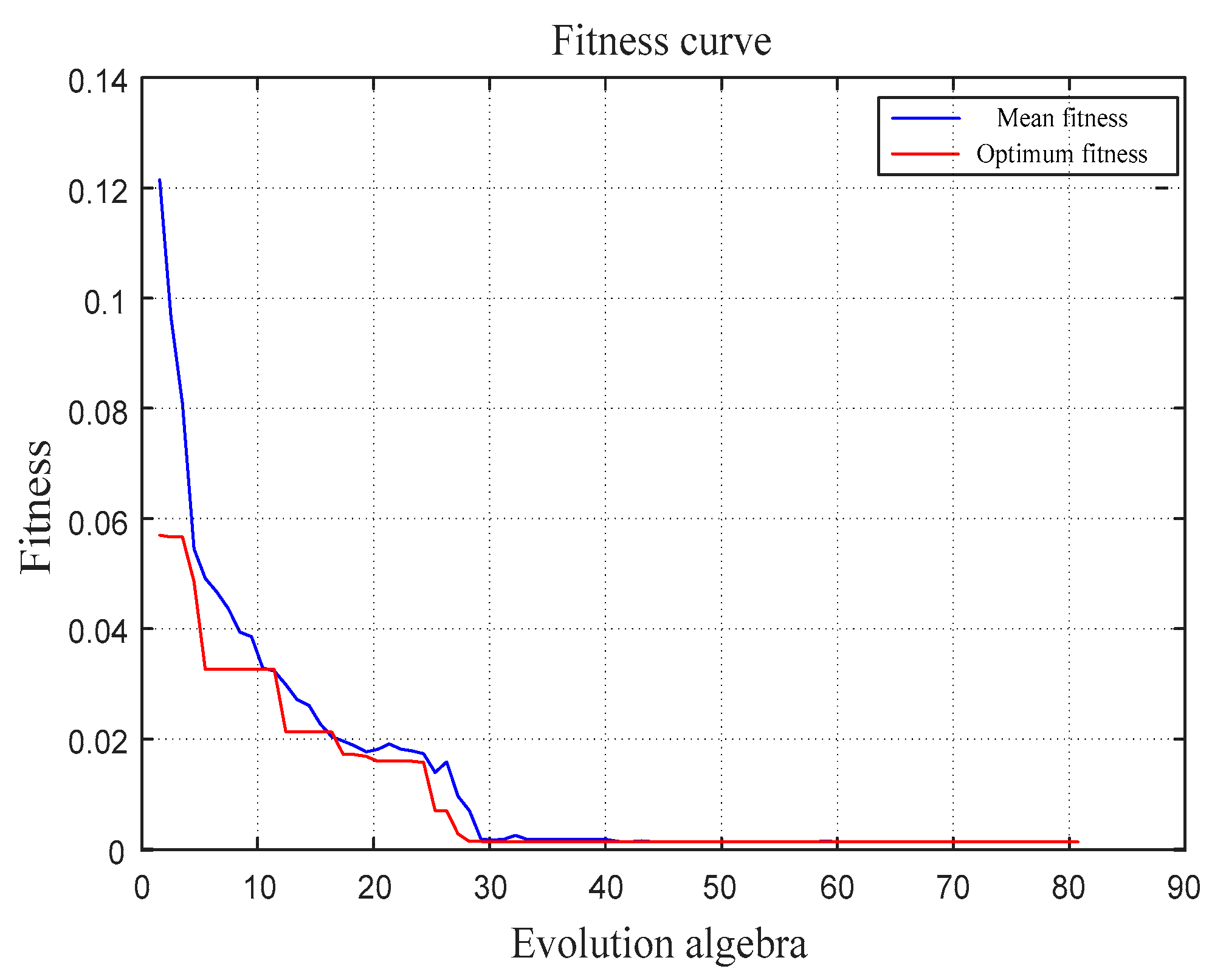
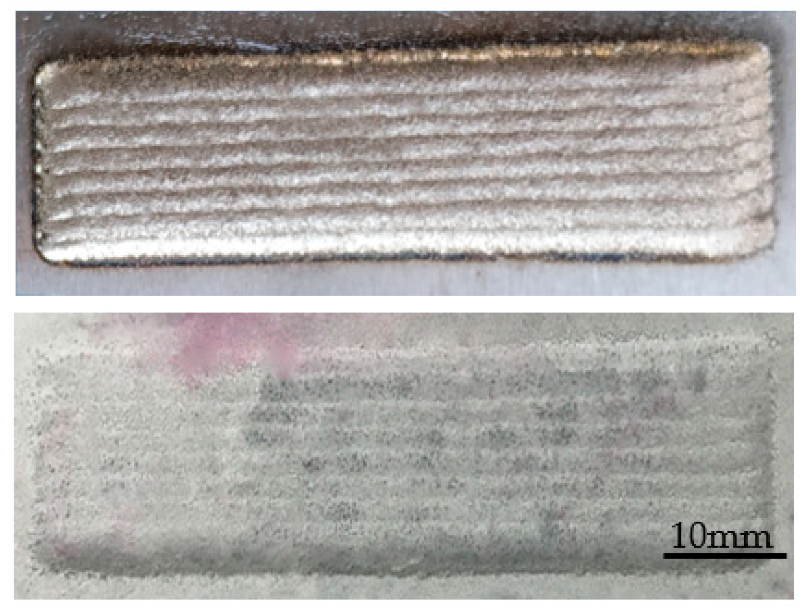
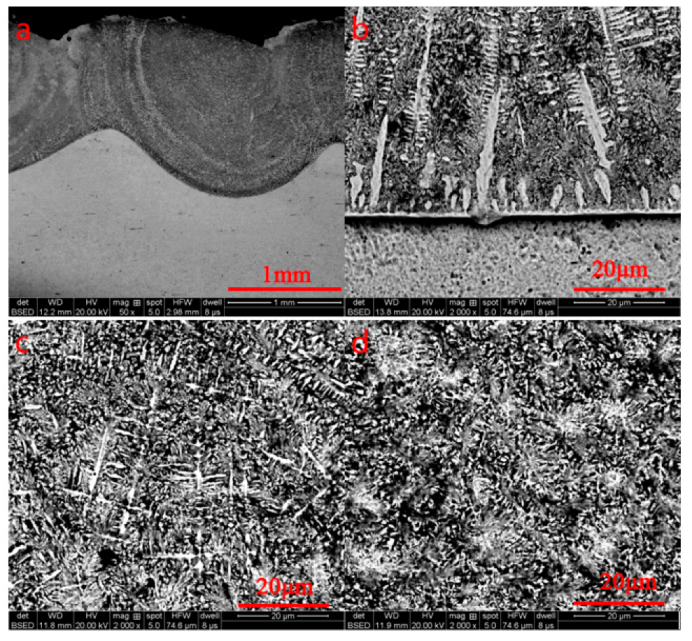
| Element | Cr | S | Si | C | p | Mn | Ni | Cu |
|---|---|---|---|---|---|---|---|---|
| Content | ≤0.25 | ≤0.035 | 0.17~0.37 | 0.42~0.50 | ≤0.035 | 0.50~0.80 | ≤0.25 | ≤0.25 |
| Element | C | Cr | B | Si | Fe | Ni |
|---|---|---|---|---|---|---|
| Content | 0.8 | 16 | 3.5 | 4.5 | ≤15.0 | Bal. |
| Level | Powder Feed Rate A/(g/min) | Overlap Rate B/(%) | Scanning Speed C/(mm/s) |
|---|---|---|---|
| 1 | 15 | 45 | 5 |
| 2 | 17 | 50 | 7 |
| 3 | 19 | 55 | 9 |
| 4 | 21 | 60 | 11 |
| Samples | A/(g/min) | B/(%) | C/(mm/s) | Crack Density/(mm/mm2) |
|---|---|---|---|---|
| #1 | 1 | 1 | 1 | 0.002472 |
| #2 | 1 | 2 | 2 | 0.112450 |
| #3 | 1 | 3 | 3 | 0.131451 |
| #4 | 1 | 4 | 4 | 0.140142 |
| #5 | 2 | 1 | 2 | 0.034483 |
| #6 | 2 | 2 | 1 | 0.121578 |
| #7 | 2 | 3 | 4 | 0.169252 |
| #8 | 2 | 4 | 3 | 0.226565 |
| #9 | 3 | 1 | 3 | 0.085027 |
| #10 | 3 | 2 | 4 | 0.149855 |
| #11 | 3 | 3 | 1 | 0.152161 |
| #12 | 3 | 4 | 2 | 0.250340 |
| #13 | 4 | 1 | 4 | 0.120522 |
| #14 | 4 | 2 | 3 | 0.134810 |
| #15 | 4 | 3 | 2 | 0.171483 |
| #16 | 4 | 4 | 1 | 0.278756 |
| Test Index | Powder Feed Rate (A) | Overlap Rate (B) | Scanning Speed (C) |
|---|---|---|---|
| K1 | 0.096629 | 0.060626 | 0.138742 |
| K2 | 0.137970 | 0.129673 | 0.142189 |
| K3 | 0.159346 | 0.156087 | 0.144463 |
| K4 | 0.176393 | 0.223951 | 0.144943 |
| Range | 0.079764 | 0.163325 | 0.006201 |
| Influence order | B > A > C | ||
| Optimal level | A1 | B1 | C1 |
| Optimal group | A1B1C1 | ||
| Serial Number | Test Value/(mm/mm2) | Predicted Value/(mm/mm2) | Relative Error/(%) |
|---|---|---|---|
| #1 | 0.002472 | 0.002484 | 0.465210% |
| #2 | 0.112450 | 0.112576 | 0.112050% |
| #3 | 0.131451 | 0.131371 | 0.060859% |
| #4 | 0.140142 | 0.140271 | 0.092049% |
| #5 | 0.034483 | 0.034578 | 0.275498% |
| #6 | 0.121578 | 0.115506 | 4.994325% |
| #7 | 0.169252 | 0.169319 | 0.039586% |
| #8 | 0.226565 | 0.226416 | 0.065765% |
| #9 | 0.085027 | 0.088607 | 4.210427% |
| #10 | 0.149855 | 0.158379 | 9.024724% |
| #11 | 0.152161 | 0.151899 | 0.172186% |
| #12 | 0.250340 | 0.250255 | 0.033954% |
| #13 | 0.120522 | 0.120482 | 0.033189% |
| #14 | 0.134810 | 0.140005 | 3.853572% |
| #15 | 0.171483 | 0.171375 | 0.062980% |
| #16 | 0.278756 | 0.278351 | 0.145288% |
| Powder Feed Rate/(g/min) | Overlap Rate/(%) | Scanning Speed/(mm/s) | Test Result/(mm/mm2) | Prediction Results/(mm/mm2) | Relative Error/(%) |
|---|---|---|---|---|---|
| 16 | 50 | 10 | 0.082156 | 0.074112 | 9.791129% |
| 19 | 45 | 12 | 0.091211 | 0.088445 | 3.032529% |
| 20 | 55 | 6 | 0.259120 | 0.260931 | 0.698904% |
© 2019 by the authors. Licensee MDPI, Basel, Switzerland. This article is an open access article distributed under the terms and conditions of the Creative Commons Attribution (CC BY) license (http://creativecommons.org/licenses/by/4.0/).
Share and Cite
Yu, J.; Sun, W.; Huang, H.; Wang, W.; Wang, Y.; Hu, Y. Crack Sensitivity Control of Nickel-Based Laser Coating Based on Genetic Algorithm and Neural Network. Coatings 2019, 9, 728. https://doi.org/10.3390/coatings9110728
Yu J, Sun W, Huang H, Wang W, Wang Y, Hu Y. Crack Sensitivity Control of Nickel-Based Laser Coating Based on Genetic Algorithm and Neural Network. Coatings. 2019; 9(11):728. https://doi.org/10.3390/coatings9110728
Chicago/Turabian StyleYu, Jiangtong, Wenlei Sun, Haibo Huang, Wei Wang, Yangxiao Wang, and Yawei Hu. 2019. "Crack Sensitivity Control of Nickel-Based Laser Coating Based on Genetic Algorithm and Neural Network" Coatings 9, no. 11: 728. https://doi.org/10.3390/coatings9110728




